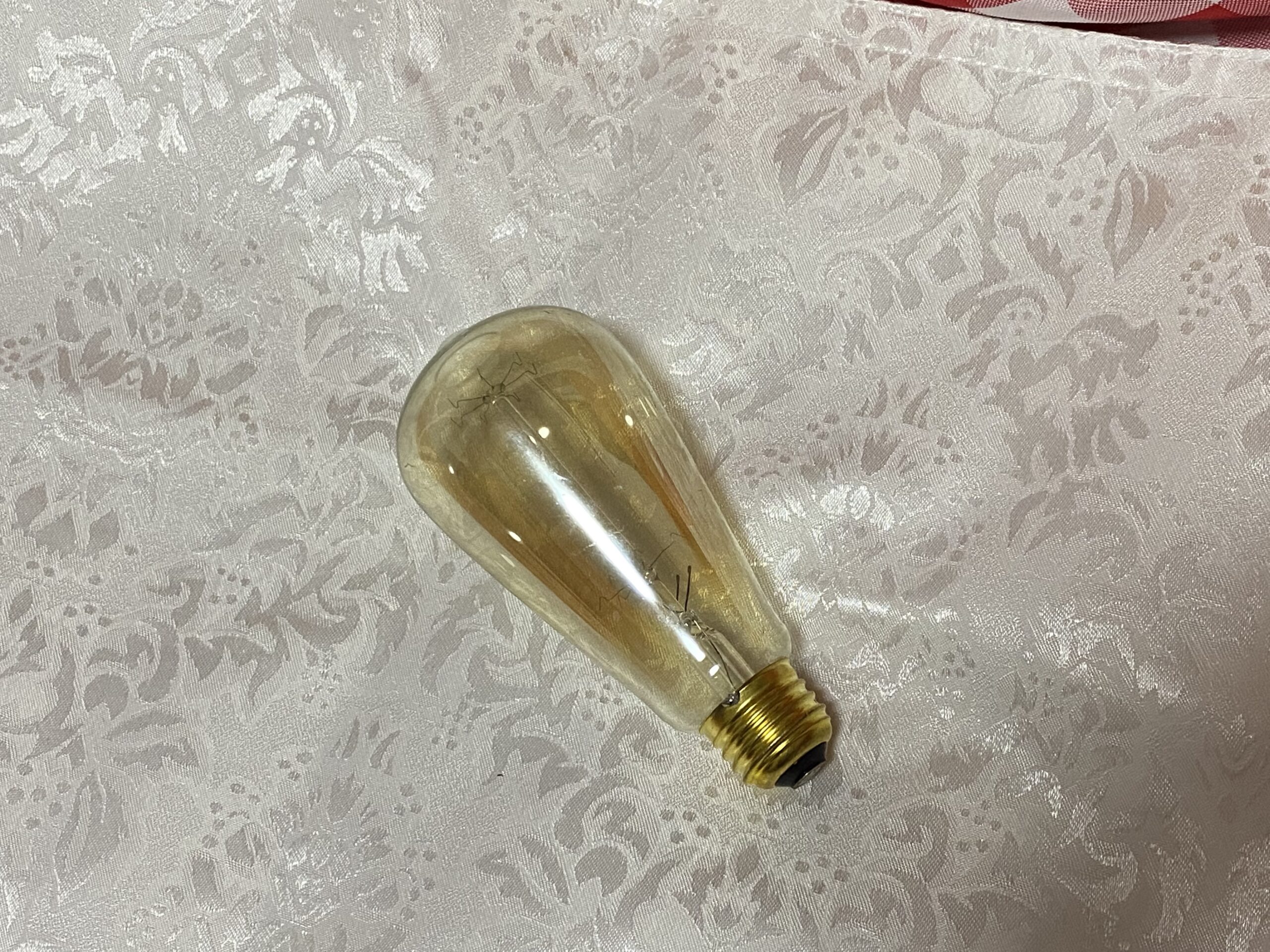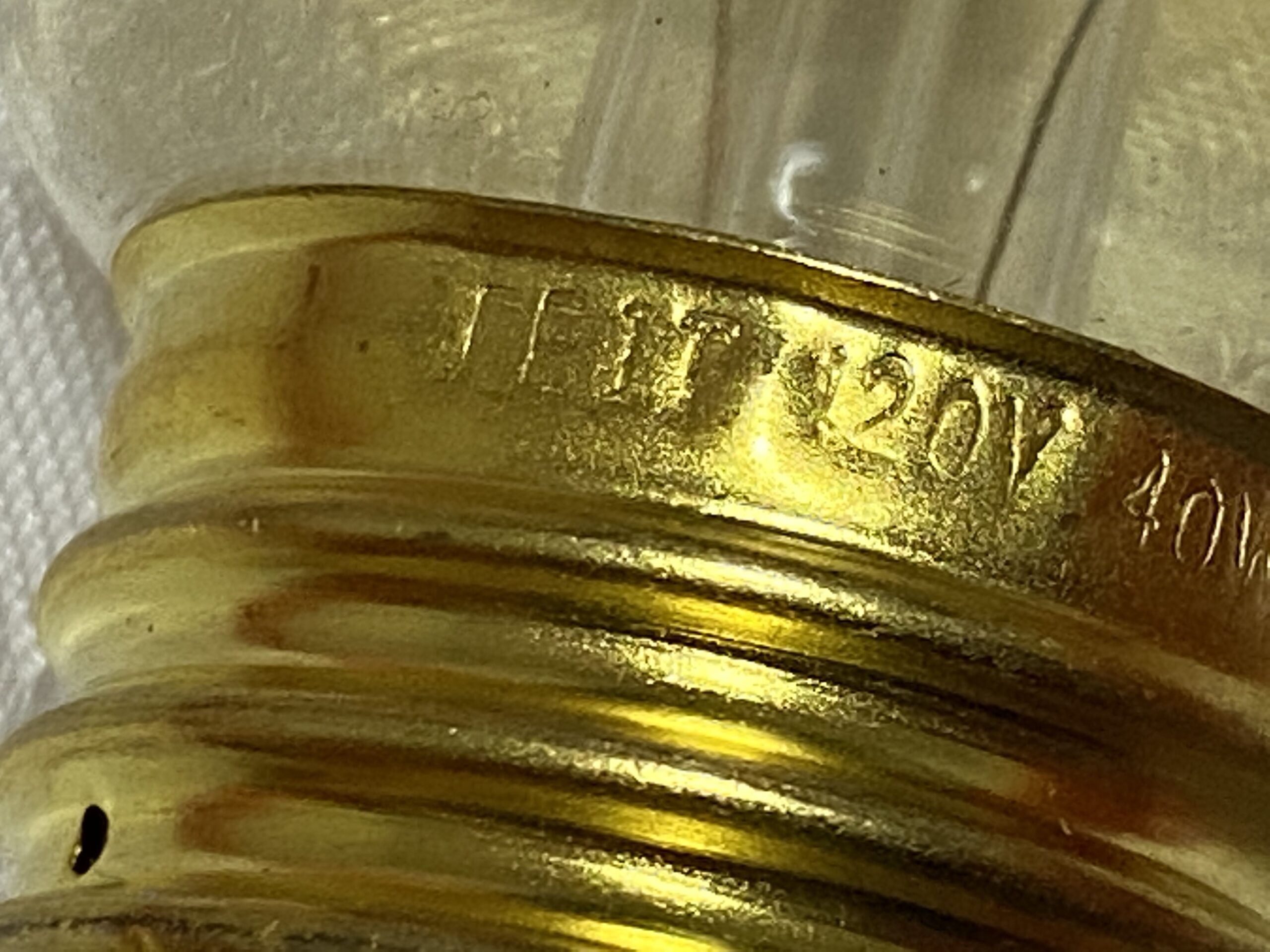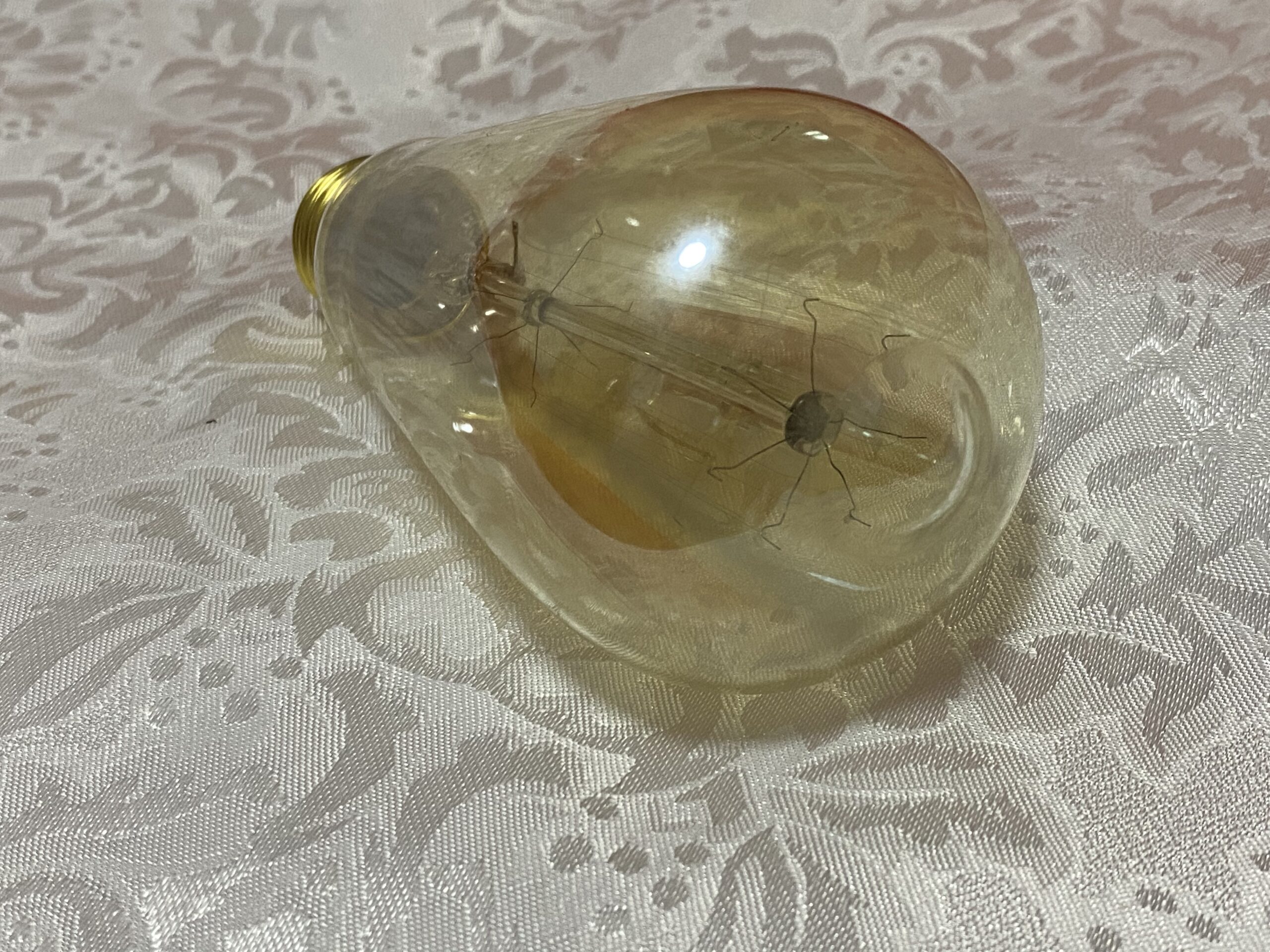Newer (but old fashioned style) FEIT Electric light bulb: 4,366 +/- 63 ppm Lead (+ 23 ppm Cadmium).


 Introduction:
Introduction:
Tamara Rubin is an independent advocate for consumer goods safety, and she is also a mother of Lead-poisoned children. She began testing consumer goods for toxicants in 2009, and was the parent-advocate responsible for finding Lead in the popular fidget spinner toys in 2017. She uses XRF testing (a scientific method used by the Consumer Product Safety Commission) to test consumer goods for metallic toxicants (including Lead, Cadmium, Mercury and Arsenic). To read more about the testing methodology employed for the test results reported on this blog, please click this link.
Reading #1.) on the glass of the light bulb
60-seconds per test (repeated multiple times)
- Lead (Pb): 4,366 +/- 63 ppm
- Cadmium (Cd): 23 +/- 3 ppm
- Bromine (Br): 6 +/- 2 ppm
- Chromium (Cr): 370 +/- 145 ppm
- Iron (Fe): 3,907 +/- 120 ppm
- Copper (Cu): 196 +/- 21 ppm
- Zinc (Zn): 77 +/- 10 ppm
- Zirconium (Zr): 1,143 +/- 18 ppm
- Nb: 1,060 +/- 18 ppm
- Molybdenum (Mo): 828 +/- 19 ppm
- Indium (In): 23 +/- 4 ppm
- Tin (Sn): 29 +/- 5 ppm
- Antimony (Sb): 35 +/- 7 ppm
- Barium (Ba): 1,369 +/- 31 ppm
- W: 301+/- 38 ppm
- Bismuth (Bi): 42 +/- 10 ppm
Reading #2.) on the gold colored metal threads of the light bulb
60-seconds per test (repeated multiple times)
- Iron (Fe): 230 +/- 37 ppm
- Nickel (Ni): 285 +/- 41 ppm
- Copper (Cu): 632,700 +/- 700 ppm
- Zinc (Zn): 362,900 +/- 600 ppm
- Nb: 968 +/- 35 ppm
- Tin (Sn): 670 +/- 25 ppm
- Barium (Ba): 2,089 +/- 69 ppm
- Bismuth (Bi): 62 +/- 32 ppm
Reading #3.) on the silver colored metal (solder) end of the light bulb
60-seconds per test (repeated multiple times)
- Lead (Pb): 342 +/- 48 ppm
- Nickel (Ni): 285 +/- 178 ppm
- Copper (Cu): 113,800 +/- 600 ppm
- Zinc (Zn): 113,500 +/- 500 ppm
- Tin (Sn): 763,700 +/- 1,400 ppm
- Antimony (Sb): 1,684 +/- 93 ppm
- Barium (Ba): 3,099 +/- 386 ppm
- Bismuth (Bi): 3,630 +/- 76 ppm
Some additional reading that might be of interest:
- The post discussing the testing methodology used on this website
- Post discussing how to send in an item for testing
- Things that you can test at home.
- Things that might be better tested with an XRF instrument.
- “Can I test things myself at home?”
Thanks for reading. Thank you for sharing my posts. As always, please let me know if you have any questions and I will do my best to answer them personally as soon as I have a moment (which may not be right away – but I will try!)
Tamara Rubin
#LeadSafeMama
Amazon links are affiliate links. If you purchase something after clicking on one of my links I may receive a percentage of what you spend – at no extra cost to you.


Never Miss an Important Article Again!
Join our Email List



 Introduction:
Introduction: 

Are these bulbs harmful to use in a fixture? Are the toxins avoidable installing bulbs with gloves? Not safe at all in a home?
Thanks!
Should be safe to use by adults since the bulb temperature will not reach anywhere near the vaporization temperature for either substance. Washing hands with soap and water is needed after handling.
Ugh…was rummaging through stash of ‘old’ incandescent lightbulbs (oldest ones from 2016) and noticed bottom metal/solder which was oxidized (brushed off onto my fingers) on some and thought…uh oh. Swab tested them and most turned bright red immediately. One of the boxes had a warning of the solder being leaded 🙁
Could it possibly be pure lead solder on the bottom metal of the bulbs? Is it unique to incandescent bulbs only? Something else for us to be aware of I guess
Which swabs did you use? Sounds like you used the fake Chinese knock off ones. Lead is not a good conductor and would not be on the conductivity point on light bulbs.